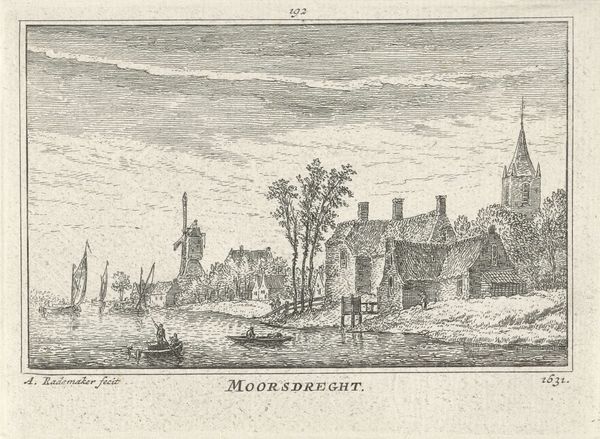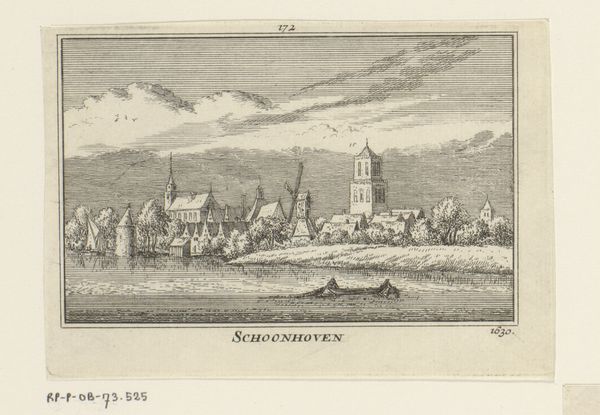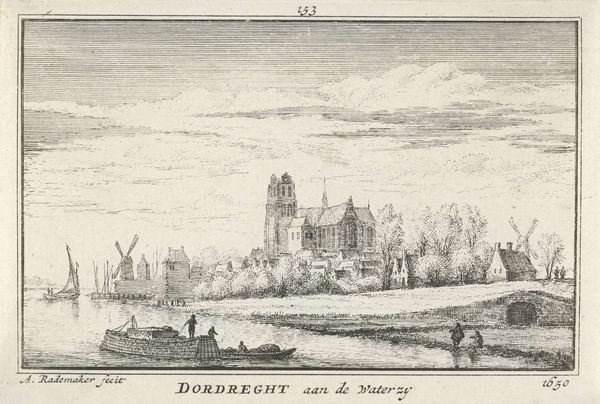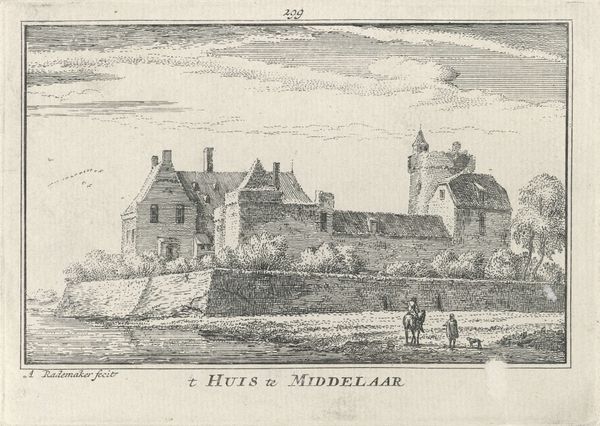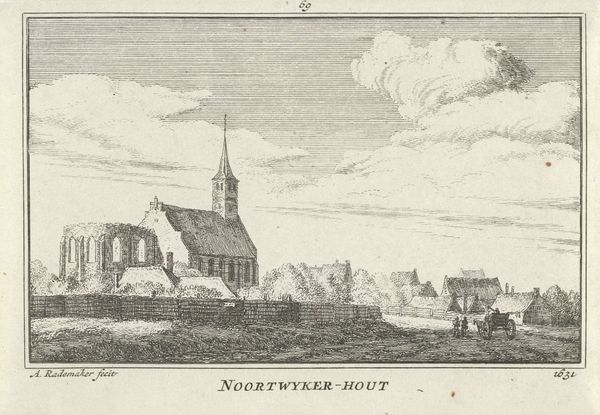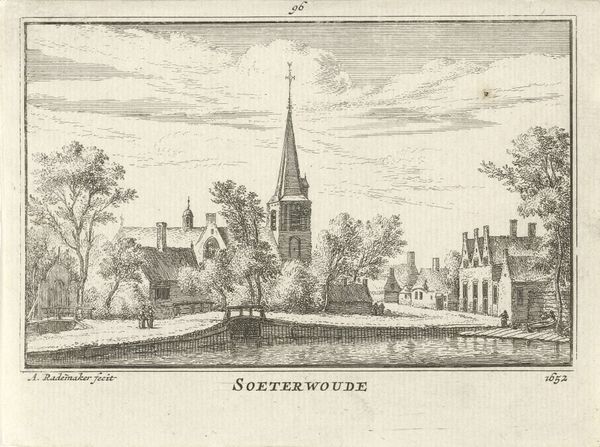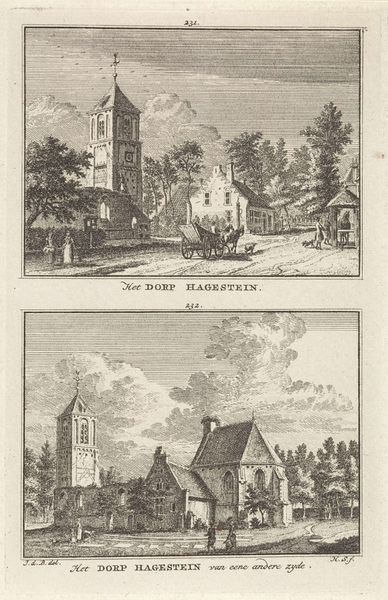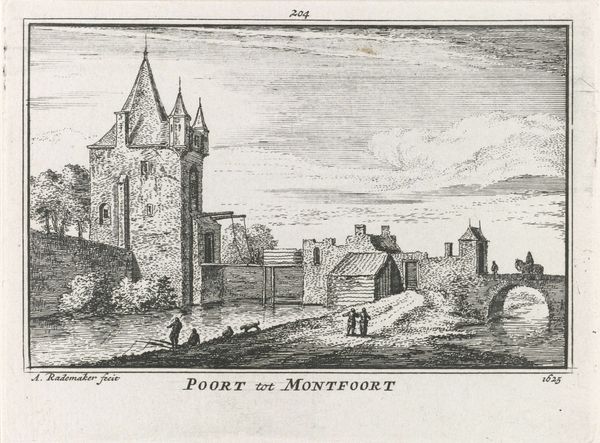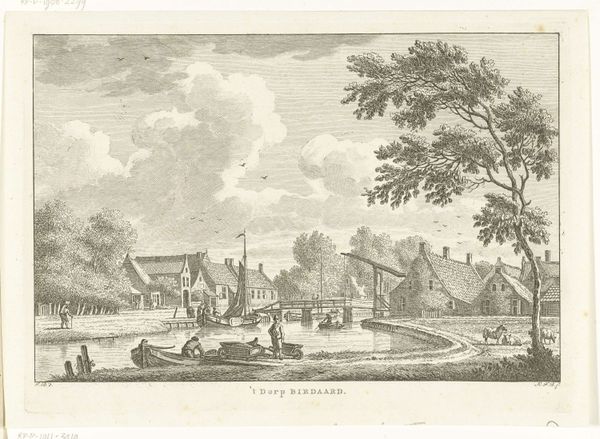
print, engraving
#
baroque
#
dutch-golden-age
# print
#
old engraving style
#
landscape
#
cityscape
#
engraving
Dimensions: height 80 mm, width 115 mm
Copyright: Rijks Museum: Open Domain
Editor: This is Abraham Rademaker's "View of Moordrecht," an engraving from between 1727 and 1733, currently held at the Rijksmuseum. I’m struck by how… peaceful it seems. A sleepy little town, dominated by the church spire, reflected in the calm water. What do you see in this piece? Curator: Well, I find it fascinating to consider these kinds of images in the context of the Dutch Golden Age and its aftermath. They served a powerful social function. Prints like this weren't simply records; they actively shaped perceptions and even contributed to a sense of national identity. Think of the Dutch Republic and its growing emphasis on civic pride and local identity. Editor: So, these weren’t just objective landscape depictions? Curator: Not at all. The printing press made art more accessible and allowed for the mass distribution of these townscapes. They could be commissioned by the city or local elites to be used as symbolic representation of power or identity. Does that make sense? Editor: It does. Almost like visual propaganda. Curator: Precisely! Consider the placement of the church, which has a position of power, looking down over Moordrecht! These prints bolstered local pride and affirmed a certain social order, shaping collective memory and civic identity. In this print we see it nestled among smaller domestic houses. We are given a sense of home in the buildings; even those out at sea come towards this settlement. The engraving becomes a symbol of social values in an ideal image. Editor: That gives the print a totally new meaning for me. I'm looking at it with a completely different perspective now, realizing the underlying messages in what initially just seemed like a charming town scene. Thank you! Curator: And thank you. Thinking about art in terms of its public role can unlock a lot of intriguing ideas.
Comments
No comments
Be the first to comment and join the conversation on the ultimate creative platform.
